Cold and Chilly on the Launchpad
Since my freshman year, I have been a member of the High Power Rocketry Club (HPRC) at WPI, and now, after two years, I was invited to actively participate in the launch of our competition rocket. We are the largest engineering club on campus, with about 100 active members, most of whom are aerospace engineering students. For the past three years, we have been competing in the IREC 10k COTS category (Intercollegiate Rocket Engineering Competition 10 000 feet Commercial off-the-shelf) – a large international competition held annually at Spaceport America in New Mexico, USA, where students launch over 100 rockets with payloads weighing 8.8 lbs (4 kg) to target altitudes of either 10 000 feet or 30 000 feet (3 048 m or 9 144 m). The goal is to reach the exact target altitude – not a foot more, not a foot less.
In late February, I had the opportunity to participate in a test launch to verify new systems. This launch was also the first reusable launch of last year’s 12-foot (3.6-meter) tall rocket. My role was simple but crucial: to assemble the rocket’s body parts using our self-developed reusable joint systems. I usually don’t participate in launches because my role on the team is more of a manufacturing consultant and machining specialist.
So I attended the pre-launch briefing in our "hangar," where part of our team, the test launch team, practiced the complete assembly and pre-integrated many systems, such as avionics or payload. We found and fixed a few last-minute issues, and we were ready for Saturday's test launch. Unfortunately, the first launch window was canceled due to bad weather. No problem, everything was postponed to the following weekend.
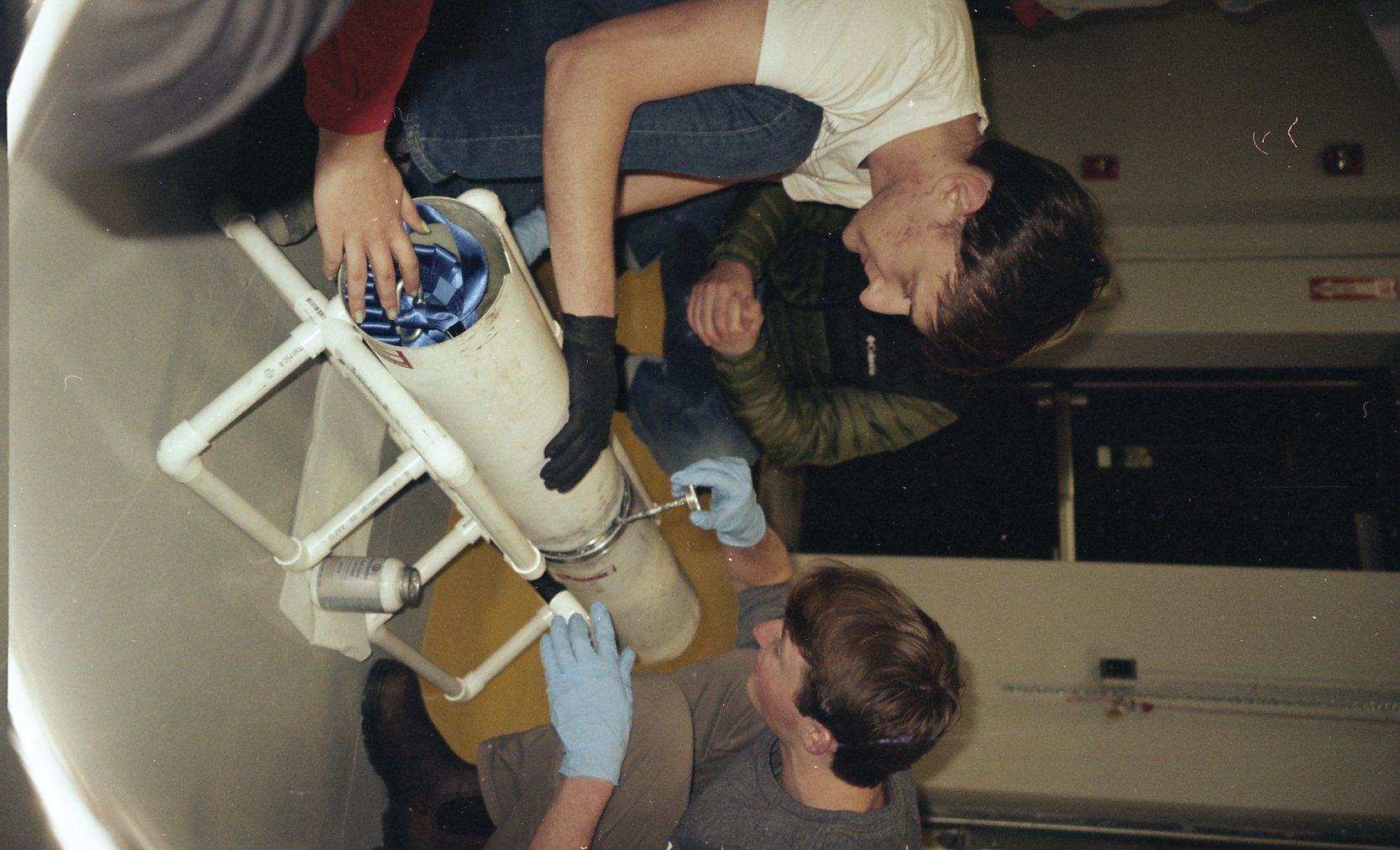
Photo from the assembly, taken on real retro film
Six cars leave the campus early in the morning, around 4 AM, and drive four hours north from Worcester, almost to the US-Canada border. Today’s launch site is located in northern Vermont. It’s sunny but really cold (-10°C with a wind chill of -25°C). The team unloads a lot of boxes and rocket parts, and the assembly begins. While we’re packing parachutes, securing systems into the rocket, and gradually screwing sections together, many smaller rockets are launching in the background. The launch site is open to all enthusiasts.
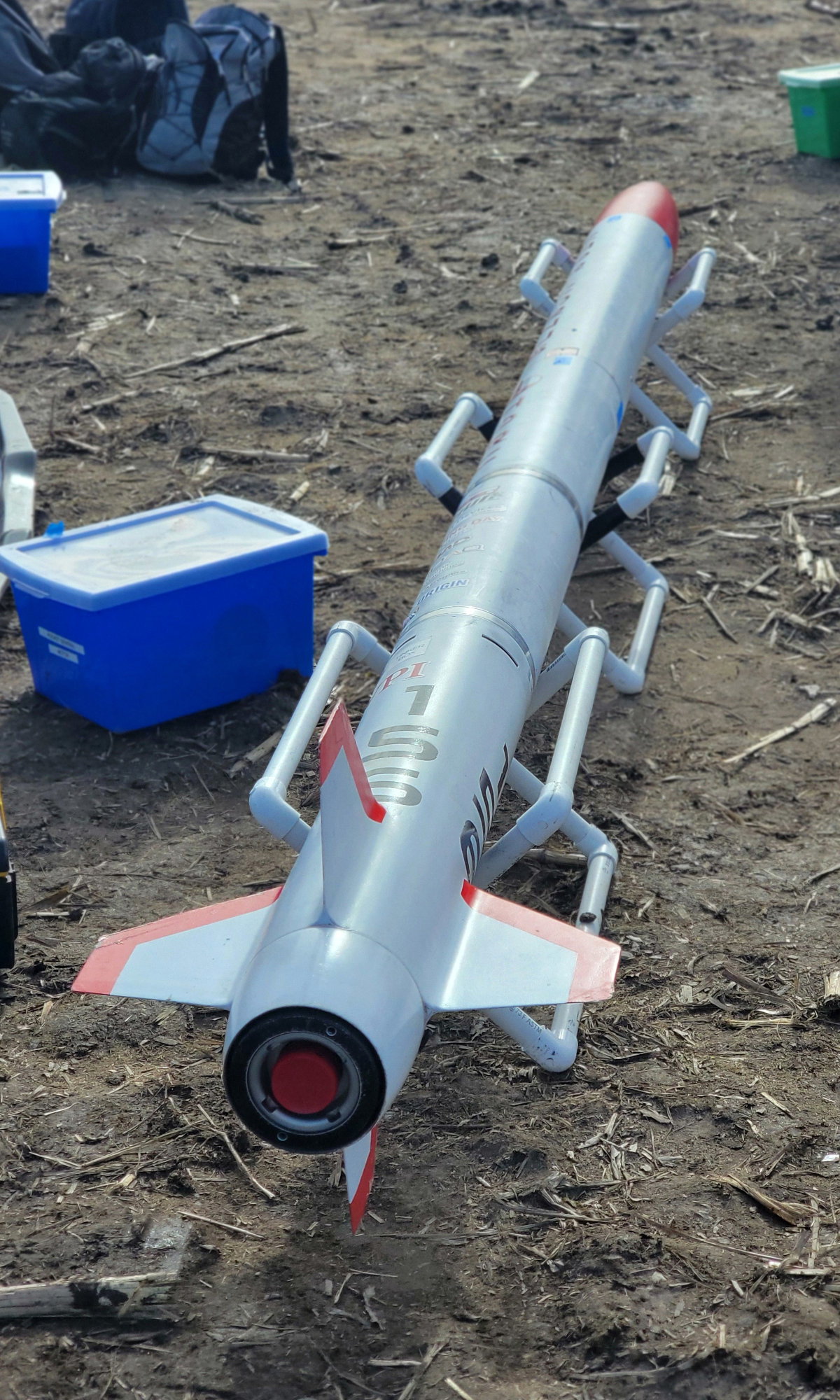
The assembled Capricornus project rocket, ready for transport
After six hours of work, during which we double-checked all the checklists, we can finally insert the motor and move the rocket to the launch pad. After fixing it onto the launch rail and inserting the igniter, all that’s left is to hope that the parachutes open and there’s no rapid unscheduled disassembly. Everyone steps back to a safe distance, at least 100 meters away.
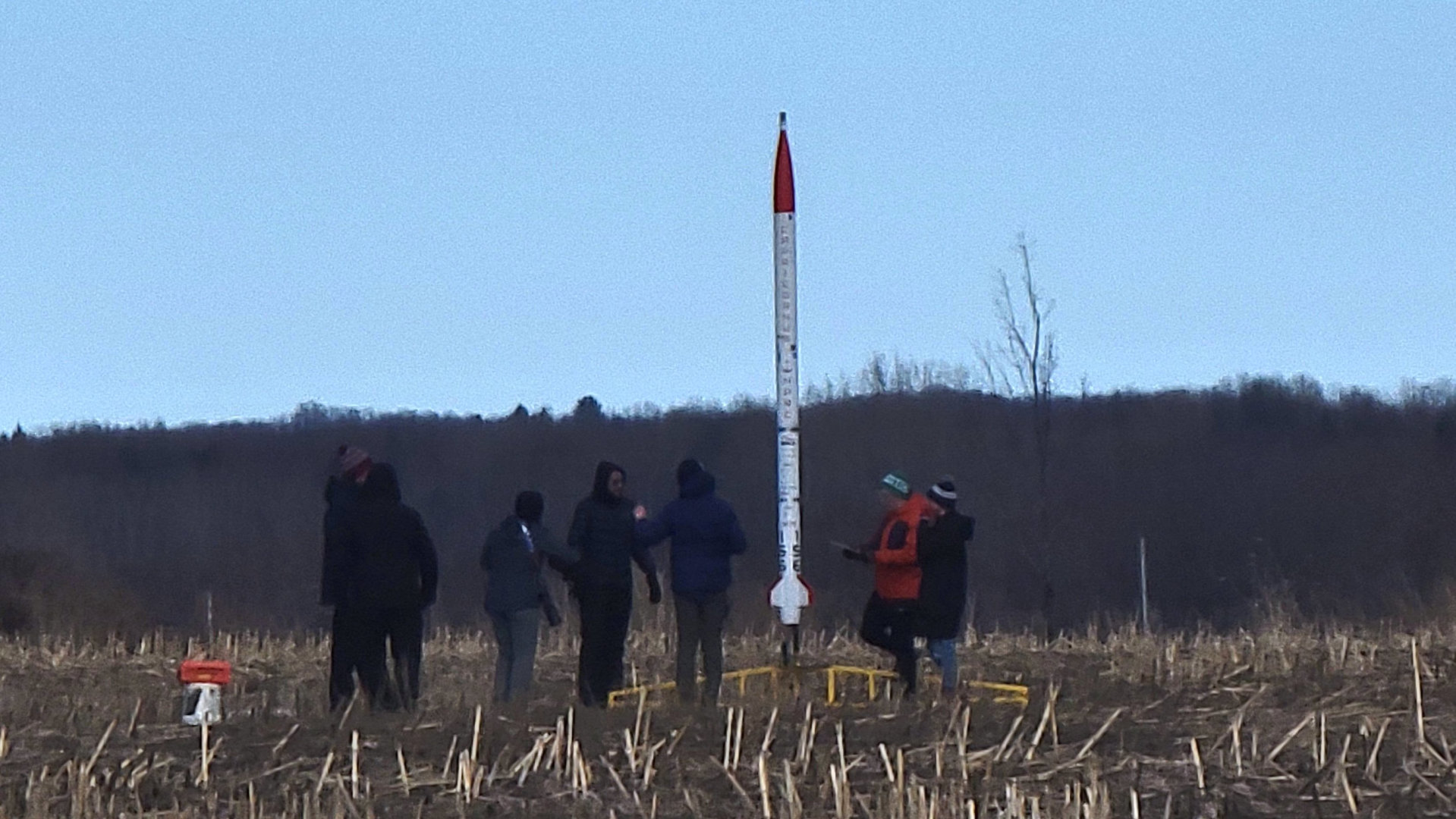
The Deneb rocket on the launch pad; for size comparison next to students
Launch in 5, 4, 3, 2, 1.
A moment of silence. Growing tension. Then the roar of the motor as the 67-pound (30 kg) rocket lifts off incredibly quickly.
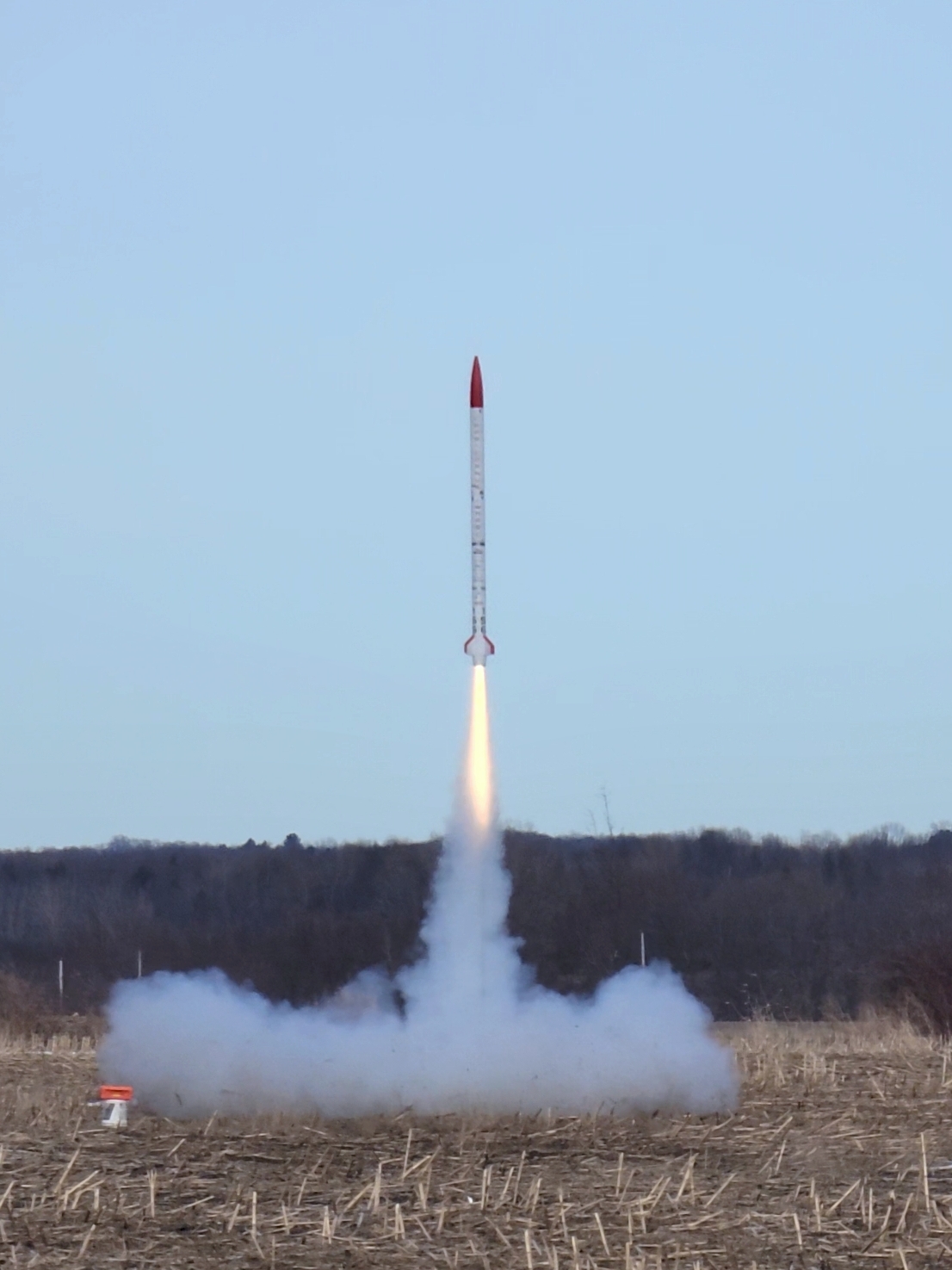
Liftoff!
It’s an incredibly satisfying feeling to see the result of our work in motion. Our rocket reaches speeds of up to 700 km/h in about 3 seconds. Then the motor burns out, and inertia carries it to an altitude of 6 800 feet (2 070 m).
Video of the launch
In reality, it looks like the rocket simply disappears into the blue sky. After about 20 seconds, we hear a faint pop as the CO2 cartridge is fired, and someone spots a dot in the sky – the drogue parachute. First success. The rocket is descending quickly. As it approaches, everyone’s nerves are stretched tight, waiting for the main parachute. But there is still nothing. 1 500 feet (450 m). We hear the next charges firing as planned, and we see the rocket separating and deploying the payload, which successfully deploys its own parachute. But the rocket’s main parachute is still not out. You can hear people whisper, "Come on, you can do it," or "Please!" But the rocket isn’t slowing down. In the distance, we see it falling rather too quickly. Then there’s a nasty loud crack. We landed. Hard.
Up until this moment, we all stood motionless with heads turned upward. Now that the rocket has landed, the "clear" is announced, and we begin to move. Everyone splits up and runs across the muddy fields to find the rocket parts and payload, which were blown away by a slight wind. Both were found within fifteen minutes, and overall, the launch was very successful – all systems worked without issues. Even the deployment of the main parachute worked almost perfectly – only the cord holding the rocket sections together was just 30 cm too short, which caused the main parachute to barely not pull out of the rocket’s body. Two fiberglass body sections landed directly on each other and cracked on impact. The payload survived better. The autonomous module collected data throughout the entire unpowered parachute flight. During the descent, it even extended a camera to capture potential landing sites and retracted it back just in time for landing as planned. Thus, the autonomous payload landed smoothly and without damage.
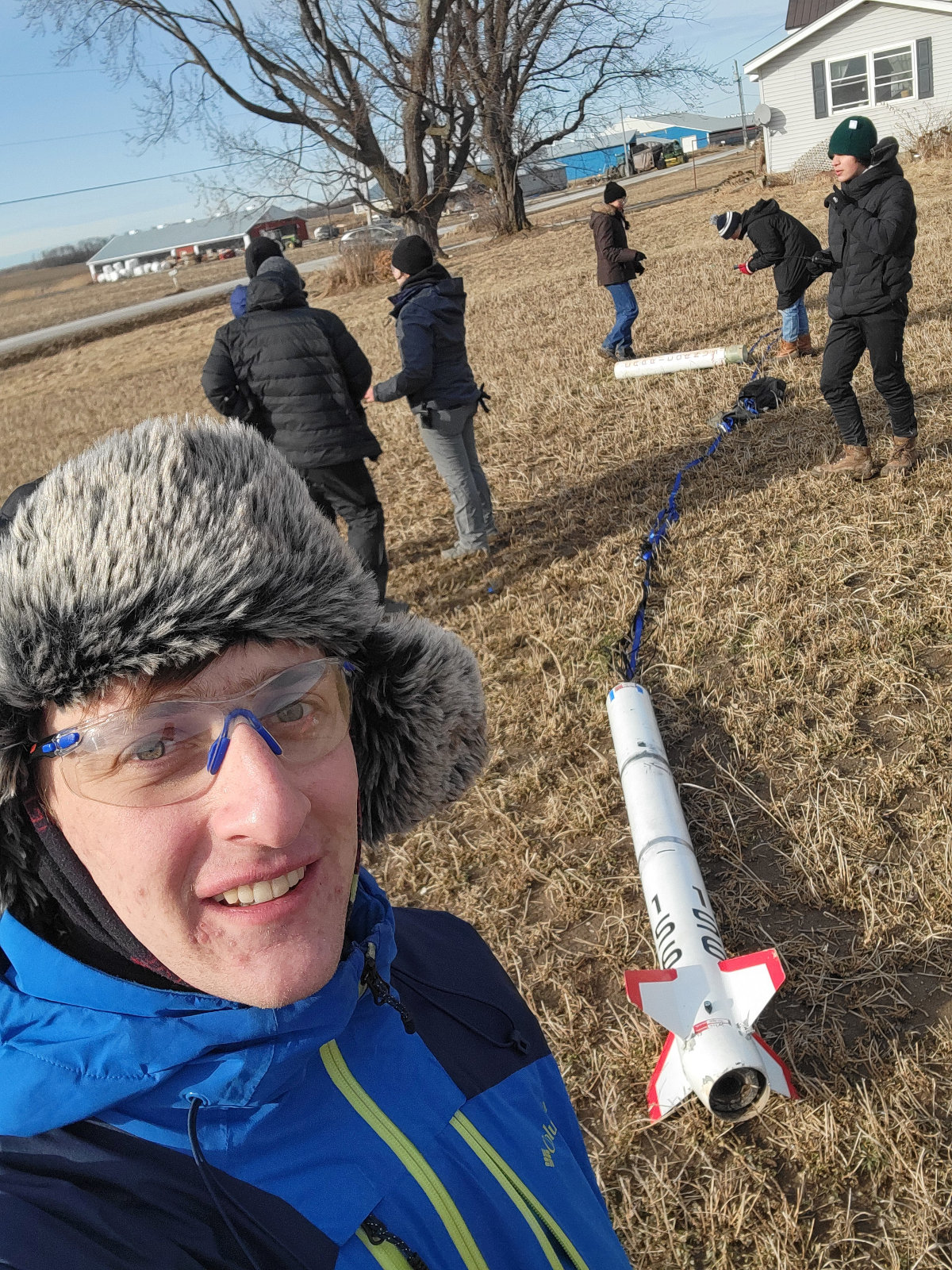
A hard landing and the visible cord connecting rocket sections after separation
We’re just about to head back when we spot another university launching a similarly large rocket, the second most powerful of the day after ours. Everything stops, the chaos of packing quiets, and everyone watches in awe as the rocket lifts off. a loud round of applause follows as soon as the main parachute is spotted. There’s something magical about experiencing an entire team coming together and enthusiastically assembling a rocket – that organized chaos. That’s why I joined the team, even though I knew almost nothing about rockets, and my focus is on robotics and computer science. Indeed, birds of a feather flock together; or rather, rocket engineers of a kind launch together. It’s all about not being afraid and just going for it!
And the testing paid off ... here I present the launch photo of this year's rocket: Project Revelatio!
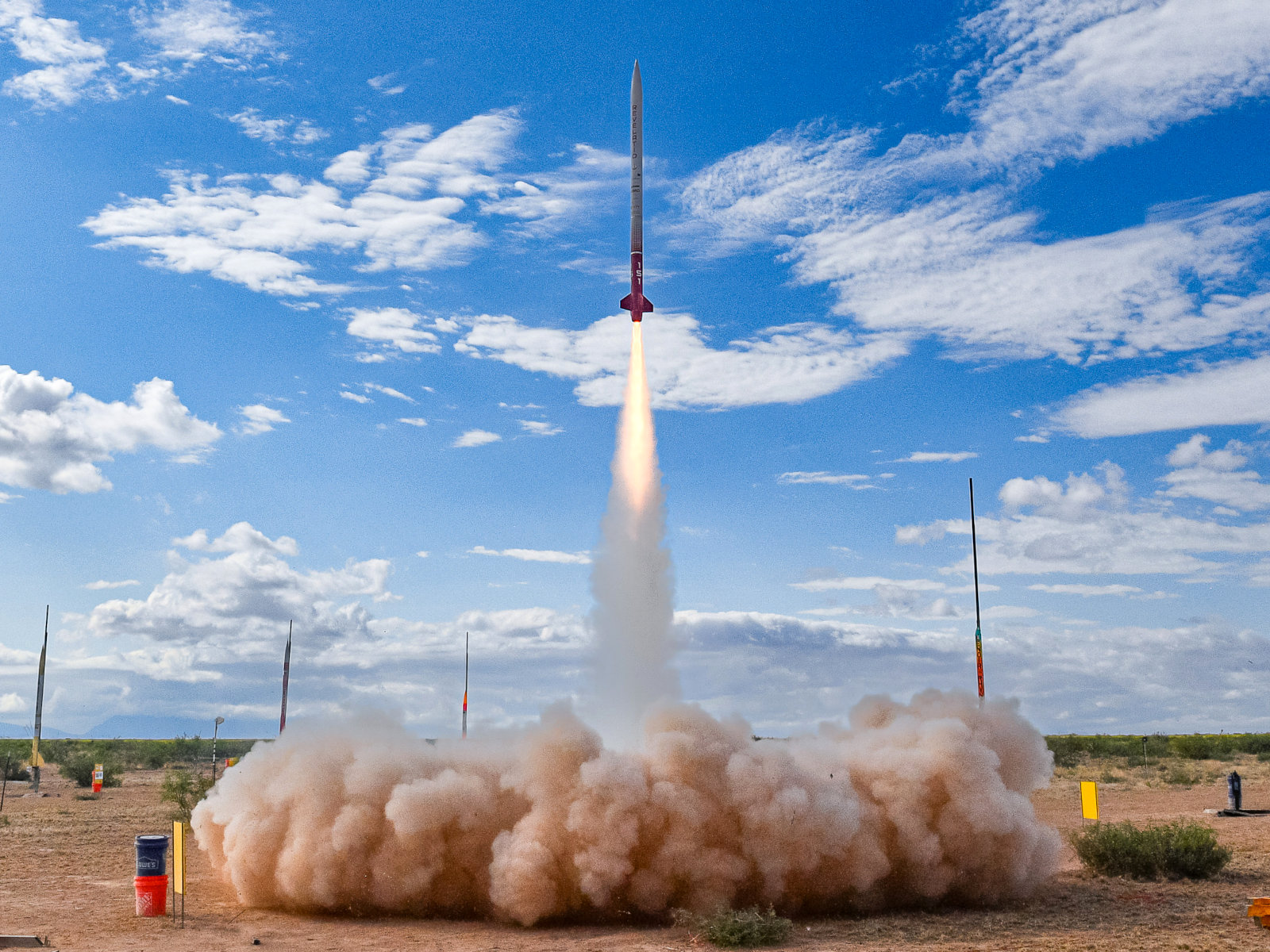
Project Revelatio epic launch photo
